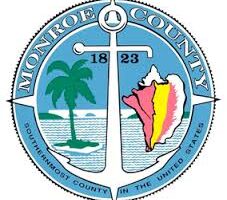LETTER TO THE EDITOR / CONTINUING THE SUNSCREEN DEBATE
At the City Commission meeting on Tuesday, January 15, 2019, many questions were brought up regarding the actual effect that Oxybenzone (BP-3) and Oxtinoxate (OC) has on our coral reefs and our aquatic ecosystem in the Florida Keys. Dr. Kurt Reyerson publicly stated in the Key West Weekly he knew of only two papers on the subject and that “These were the only two papers that are dealing with Oxybenzone and coral”. He also stated that conclusions cannot be drawn using such a small amount of research. My literature research shows that there are many studies (100+), some of which are published in very prestigious peer- reviewed scientific journals.
In fact, a very important document provided in the Agenda items from the Jan. 15th meeting was a letter from NOAA scientist, Dr. Cheryl Woodley, citing:
“The preponderance of scientific evidence indicates that oxybenzone is toxic to coral and threatens overall coral reef health by:
• inducing coral bleaching;
• harming or killing coral larvae by inducing gross deformities, DNA damage, and bleaching;
• acting as an endocrine disruptor; and
• bioaccumulating in coral tissue”
Dr. Woodley cites 34 articles and scientific peer-reviewed publications in a very concise literature review at the end of her letter.
Moreover, the presenter for the Jan. 15th meeting Dr. Carys Mitchelmore, suggested that there was “very little data on the concentration of UV filters in seawater near corals and their toxicity to corals”. I would argue that the letter from Dr. Woodley, as well as numerous other studies clearly indicate otherwise. Moreover, I would like to point out that her study was funded by the Personal Care Products Council (https://www.personalcarecouncil.org/), “The leading national trade association representing the global cosmetics and personal care products industry”, which I believe is an inherent conflict of interest and makes her testimony suspect.
The one fact that can be concluded from Dr. Mitchelmore’s presentation and every other article studying the effects of BP-3 on marine ecosystems is the following – IT IS TOXIC!
No doubt, there is still more that needs to be studied about the toxicity levels, vectors for transmission to corals, etc. but there is no escaping the fact that IT IS TOXIC. In fact, as I learn more about the effects of BP-3 on corals, other invertebrates, and fish, I am becoming more alarmed by what we don’t know. BP-3 is an oil with low solubility in water. However, it is lipid soluble, which means it is easily absorbed by phytoplankton. BP-3 floats at or near the surface where the largest concentration of phytoplankton exist. Therefore, if BP-3 is getting into the food chain, then is doesn’t matter about the concentration in the water around the corals, because corals eat zooplankton, which eat phytoplankton. The recent study by Tsui et al. 2017 suggests that > 65% of the coral tissues studied had BP-3 and >20% of coral samples from the study sites contained BP-3 concentrations exceeding the threshold values for causing larval deformities and mortality in the worst case scenario”. Adding to the alarm, is the fact that BP-3 is also an endocrine disruptor and photo-toxicant – meaning it is more poisonous in sunlight.
It was also stated that Commissioners would like to know the effects and effectiveness of some of the “reef safe” alternatives. Schneider and Lim 2019 conducted a scientific review of inorganic UV alternatives and found that zinc oxide provides a broad UVA-UVB protection, while safe for the environment.
As was stated in the past meeting, years ago the Federal government decided to ban the insecticide DDT, which at the time was considered one of the best agriculture products on the market. They did so due to the severe environmental damage it was causing. While it was important to protect the food supply and very life of our citizens, there were other products on the market that did a similar job but did not harm the environment. Therefore, the Federal government opted to do what was best for the environment, knowing that there were still products out there that worked as far as maximizing food production, but did no harm to the environment. The City of Key West has the opportunity to do the same with sunscreen and lead the country in making sure our citizens and our aquatic eco-systems are equally protected.
I am a marine scientist, researcher, and educator. As such, I do not have a financial motive. However, as a Florida Keys resident, and father of two beautiful children, I implore you to do your own research. By doing your own independent research, I feel you will agree with my assessment that these items should be banned as they have no place in the waters of the Florida Keys and our sensitive marine eco-system. I agree that protection from the sun is of paramount importance, but myself and family spend a lot of time in the sun, and prefer protective clothing, hats, etc. which gives my family more than adequate protection, without harming what we love most…the ocean.
Sincerely,
Patrick H. Rice, Ph.D.
Board of Directors, Reef Relief
Senior Marine Biologist, SharkDefense Technologies, LLC.
[livemarket market_name="KONK Life LiveMarket" limit=3 category=“” show_signup=0 show_more=0]




No Comment